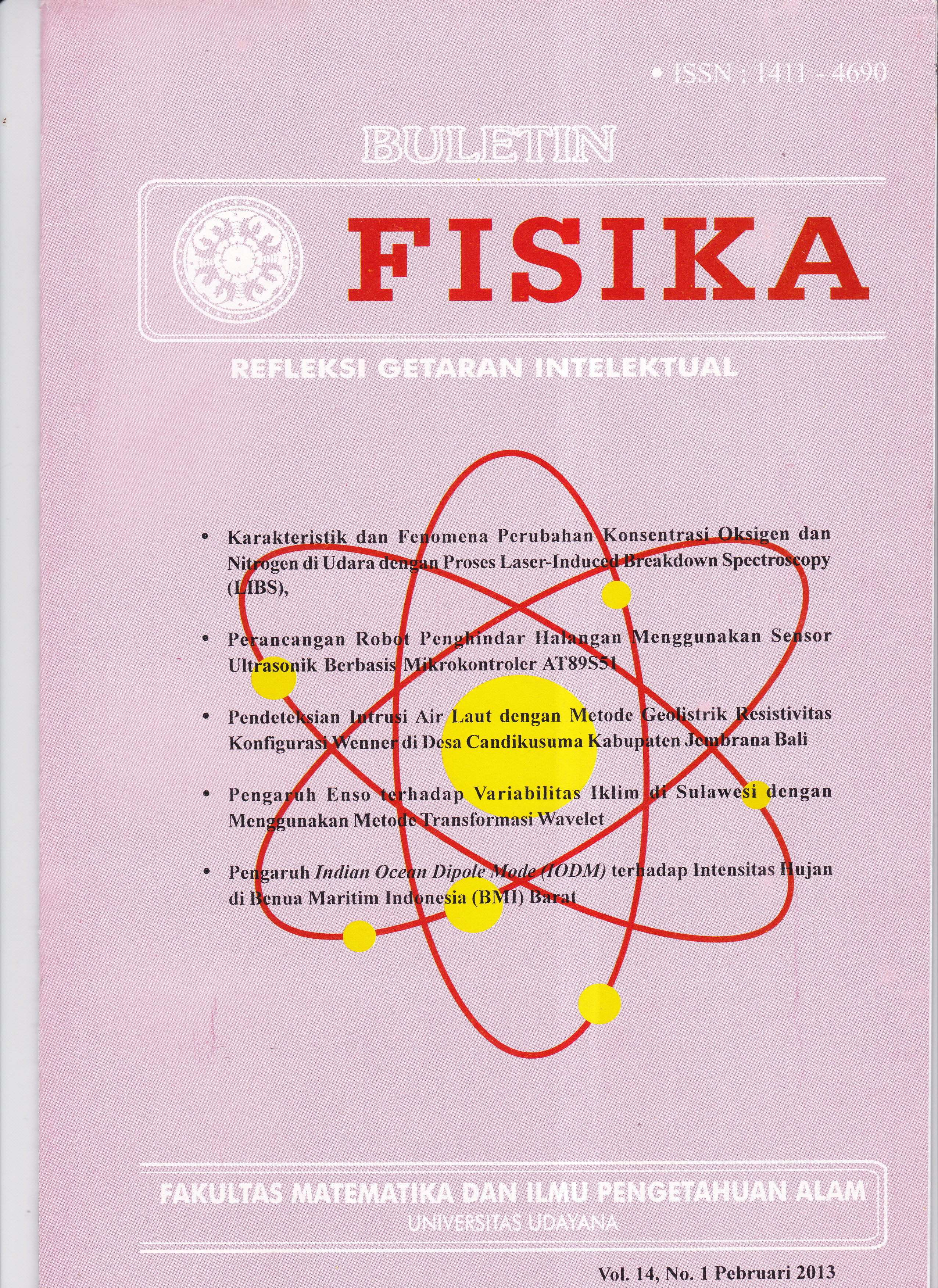PENGARUH ENSO TERHADAP VARIABILITAS IKLIM DI SULAWESI DENGAN MENGGUNAKAN METODE TRANSFORMASI WAVELET
Abstract
Research on the influence of El-Nino Southern Oscillation (ENSO) on climate variability in Sulawesi has been down using wavelet transform method. The data used in this research is the data from 2003 to 2011 which include data SST from satellite Aqua Moderate Resolution Imaging Spectroradiometer (MODIS) level 3, rainfall data from satellite Tropical Rainfall Measuring Mission (TRMM), and data Sea Level Pressure (SLP) from Climate Prediction Centre (CPC). The data were analyzed using Fourier transform to see the high period of the anomaly SPL Nino 3.4, SOI and Sulawesi rainfall anomalies. The data also analysis using wavelet transform. From the result of wavelet transform it for obtained that the power spectrum (ps) that used to find correlation between ps ENSO indicators for ps Sulawesi rainfall anomalies. Based on the results of the research, the ENSO phenomenon is impact of climate variability in the form of heavy Sulawesi rainfall in 2010. The results of the correlation ps SST anomaly Nino 3.4 to ps Sulawesi rainfall anomalies occur significant positive correlation in the period from 1.5 to 1.6 years and 2.2 to 4.5 years, while the correlation of the ps SOI ps Sulawesi rainfall anomalies occur positive correlation significantly in the period from 1.5 to 1.6 years and 2.2 to 4.6 years.












